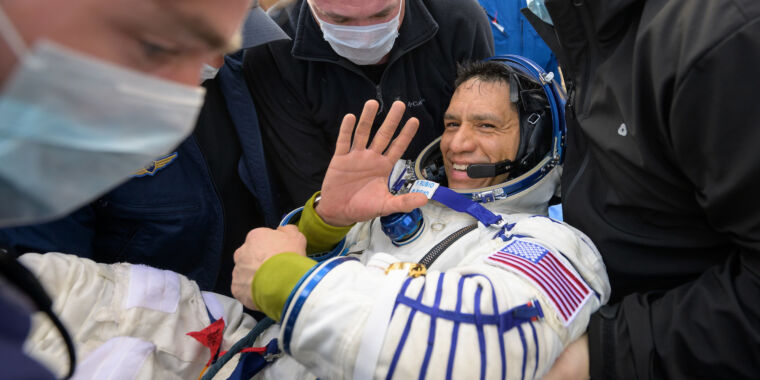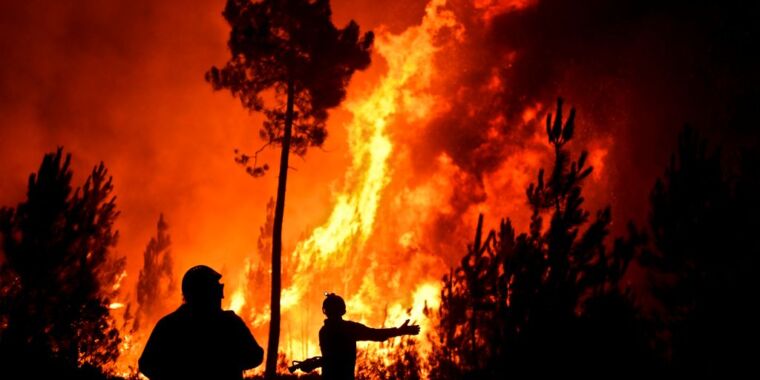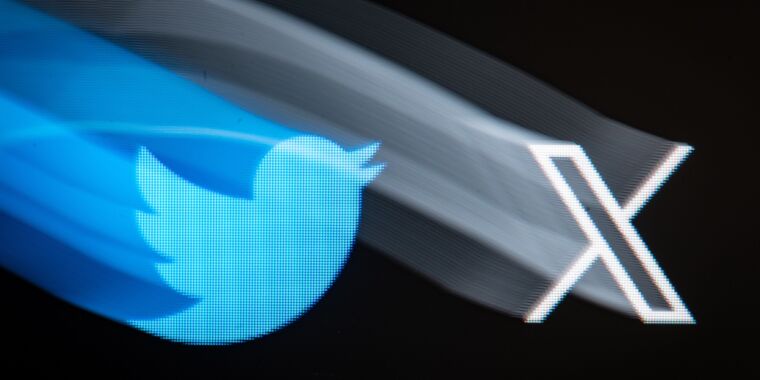
NASA astronaut Frank Rubio and two Russian crewmates parachuted to a landing on the remote steppe of Kazakhstan on Wednesday, capping a 371-day mission at the International Space Station, the longest single spaceflight ever undertaken by an American.
It was also the third-longest mission off the planet in the history of human spaceflight, eclipsed only by two Russian cosmonauts who lived on the Mir space station in the 1990s.
Rubio, a US Army lieutenant colonel who grew up in El Salvador and Miami, was supposed to spend about six months in low-Earth orbit on the International Space Station. He launched on September 21, 2022, on a Russian Soyuz spacecraft with commander Sergey Prokopyev and flight engineer Dmitri Petelin.
Three months into Rubio’s mission, the Soyuz spacecraft he rode into orbit suddenly started leaking coolant. Russian engineers determined the leak was most likely caused by an impact from a tiny fragment of rock from deep space, called a micrometeoroid, which ruptured a coolant line and sent a spray of snowflake-like particles into space as the Soyuz remained docked at the station.
Russian space officials decided it was too risky to have the crippled Soyuz spacecraft return to Earth as planned with its three-man crew, so they launched a replacement Soyuz to the station in February without anyone on board. That meant the crew originally assigned to fly on that spacecraft got bumped until the next Soyuz would be ready to launch in September.
Rubio and his Russian colleagues would have to wait for their replacements to arrive, extending their stay in orbit from six months to more than a year. NASA astronaut Loral O’Hara, Russian commander Oleg Kononenko, and cosmonaut Nikolai Chub launched to the space station on September 15, setting the stage for Rubio, Prokopyev, and Petelin to finally come home.
On the final leg of their voyage, the crewmen floated into their Soyuz MS-23 return vehicle overnight, closed hatches, and undocked from the space station a few hours later. The Soyuz spacecraft backed away from the orbiting research complex, fired thrusters for a braking burn, then descended into the atmosphere, pulling about 4.5 Gs as it streaked toward the landing site in Kazakhstan.
After deploying a large parachute, the capsule touched down on the barren plains of Kazakhstan at 7:17 am EDT (11:17 UTC) Wednesday. A Russian recovery team converged on the capsule with helicopters and all-terrain vehicles to help the crewmen out of the spacecraft.
“It’s good to be home,” Rubio told a member of the recovery team after landing.
Through a translator, Petelin said he and his crewmates were “waiting impatiently to get back” to Earth. “It was my first landing. I didn’t know what to expect. Today, I felt it to the fullest.”
Russia’s Soyuz spacecraft was the only means of transporting astronauts to and from the space station for nine years, from the retirement of NASA’s space shuttle until SpaceX’s Crew Dragon began human flights in 2020. NASA astronauts are still flying on Soyuz through a no-funds-exchanged barter agreement between NASA and Roscosmos, the Russian space agency, that also allows Russian cosmonauts to fly to the space station on US crew vehicles.








